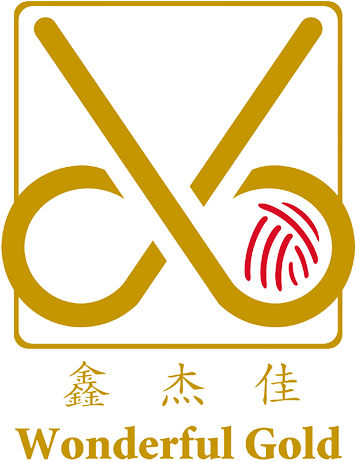Different Types of Colorwork Techniques in Crochet
Do you want to add colors in crochet? The simplest way is to work with different yarn colors, but that limits your creativity. Colorwork crocheting opens up endless possibilities for what you can make. You can work any colorwork pattern once you learn to hold your crochet hooks.
Colorwork techniques in crochet involve multiple colors, creating beautiful patterns, motifs, or designs in any project. You don't need a specialty Tunisian crochet hook, just your regular single-ended crochet hooks . Besides, you don't need to learn new skills or techniques using basic crochet stitches such as chains, single crochets (US patterns), double crochets, and more. If you want to explore colorwork, in this blog, we'll walk you through three easy techniques with step-by-step instructions. Let's get started.
Colorwork Crocheting - How to get started?
Colorwork crocheting requires a crochet hook and different colors of yarn. An understanding of yarn is helpful. Work with yarns that go with each other, matching shades or contrasting colors for the best effect. The trick to neat crocheting techniques is to manage the yarns and keep them from a mess or yarn vomit.
There is no special set of stitches or techniques. You use the basics- chain, single crochet (US terms known as double crochet in UK patterns); in some crochet methods, you carry the unused yarns until required for the following color change. For others, every color change means sniping the yarn (old color), weaving in the ends with a wool needle, and introducing the new yarn (new color). Refer to our guide on how to change colors in crochet. You can get yarns ready for crafting with yarn winders and dispensing accessories. Wind yarns from skeins to cakes or balls. You can also make small balls or bobbins of the same color for easy yarn management.
For crochet hooks, you can work with any single-ended, double-ended, or Tunisian crochet, but you will only be working on regular crocheting.
Crochet accessories such as stitch markers (locking or split ones), wool needles, a pair of scissors, yarn winders, and dispensers assist you with your crafting journey.
Let's take a look at the crochet colorwork methods:
STRANDED CROCHET
Similar to stranded knitting, which originated in Scandinavia and Iceland, stranded colorwork found its way into crocheting techniques. In this method, you use multiple colors in the same row or round, carrying all the yarn strands while you work. The name comes from the loose yarn strands carried between stitches along the back of the fabric.
In crochet, the stranded colorwork is best for non-reversible patterns, such as socks, hats, and garments. The colorwork method creates a side of yarn floats network, which is generally the project's wrong side (WS) and stays away from the spotlight. The right side (RS) of the project showcases the colorwork effect. Working on small patterns with color repeats is recommended to keep the floats short, as longer yarn strands tangle up and become messy. Ensure uniform tension to avoid distorting the fabric and puckering of yarn floats.
Fair Isle is a form of stranded colorwork from the Shetland Islands. Like knitting, this form of crochet colorwork requires only two yarn shades.
TAPESTRY CROCHET
We have discussed this form of colorwork in detail, so refer to our guide on the Tapestry crochet technique. This crochet technique carries both colors of yarn throughout the entire row but only works one color at a time. The unused color is carried along the back of the work and is picked up when needed. The colorwork crochet method creates a dense, sturdy fabric that is excellent for blankets, warm scarves, and home decor.
Another interesting and similar colorwork method is the Mosaic colorwork. The crocheting method requires carrying multiple yarns and creating repeats that mimic mosaic marbles. To explore the details, refer to our guide on Mosaic and Tapestry Colorwork Crochet techniques.
INTARSIA CROCHET

Intarsia crochet is a technique for creating color block designs. You do not carry the unused color along the back of the work; instead, you drop it and pick up the next color when needed. Intarsia creates a fabric with fewer floats on the back, ideal for items like blankets, sweaters, and scarves. To manage the yarns, you use separate bobbins or balls.
Corner-to-corner (C2C) crochet is also an interesting method for working with colors. As the name suggests, you crochet one corner to another with increases and decreases that shape the project. As the technique also works in one yarn color, it does not get an exclusive place in colorwork crocheting methods.
For colorwork in crochet, keep these tips in mind:
- Ensure uniform tension and avoid loose or tight stitches that distort the colorwork effect.
- Enhance the colorwork effect in your crochet designs by experimenting with crocheting in front and back loops.
- Weave in loose yarn ends with a wool needle as you go to minimize the finishing work.
- Practice yarn management for every colorwork method by twisting or carrying the unused yarn behind your work to prevent tangling or snagging.
- Make use of stitch markers to mark stitch or color repeats.
- Organize in balls, cakes, or bobbins to keep yarn organized and prevent confusion.
Colorwork in crochet opens up endless possibilities for beautiful projects. With KnitPro, you can explore the range of crochet hooks and accessories. Choose bamboo, wood, stainless steel, aluminium, and more. Waves with vibrant rubber handles in an ergonomic design are a handy choice. Explore Oasis, the newest innovation of interchangeable single-ended crochet hooks where you have one ergonomic handle that allows a threading system that works with hook sizes 2mm-12mm, enabling endless possibilities.










